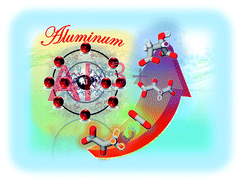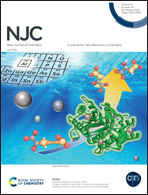Trivalent metal ions promote the malic enzyme-catalyzed building of carbon–carbon bonds from CO2 and pyruvate
Abstract
Malic enzyme (ME) from chicken liver (EC 1.1.1.40) is an enzyme that catalyzes the decarboxylation of malate into pyruvate and CO2 and the reverse reaction that introduces CO2 as a carboxy-group to pyruvate to form malate via oxaloacetate in the presence of natural co-enzyme NADP+/NADPH. Thus, ME is an attractive biocatalyst for building carbon–carbon bonds through the carboxylation of pyruvate with CO2. Since ME mainly catalyzes the decarboxylation of malate to produce pyruvate via oxaloacetate, it is necessary to devise ways to promote the carboxylation of pyruvate with CO2 to produce oxaloacetate based on the building of carbon–carbon bonds. Enhancing the carboxylation of pyruvate by the addition of metal ions with CO2 and using ME as a catalyst will lead to new insight into biocatalytic CO2 utilization research. The effect of adding divalent and trivalent metal ions to promote the ME-catalyzed building of carbon–carbon bonds through the carboxylation of pyruvate with CO2 was investigated. Specifically, it was found for the first time that the addition of trivalent aluminium and iron ions accelerates ME-catalyzed carboxylation of pyruvate with CO2. Moreover, it was found that a high concentration of aluminum ions (>100 μM) and a low concentration of iron ions (<10 μM) promote the ME-catalyzed carboxylation of pyruvate with CO2.



 Please wait while we load your content...
Please wait while we load your content...